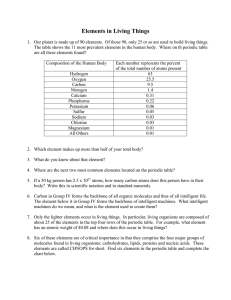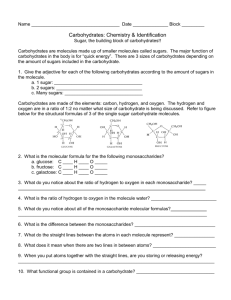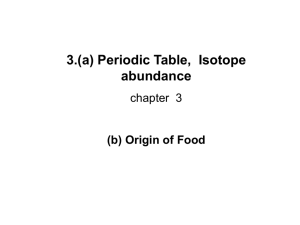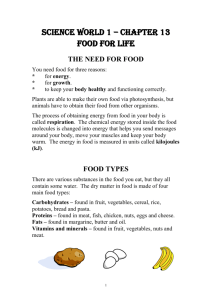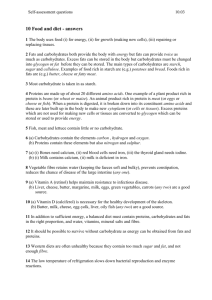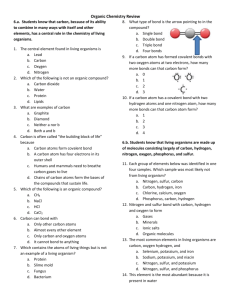Elements in Living Things
advertisement
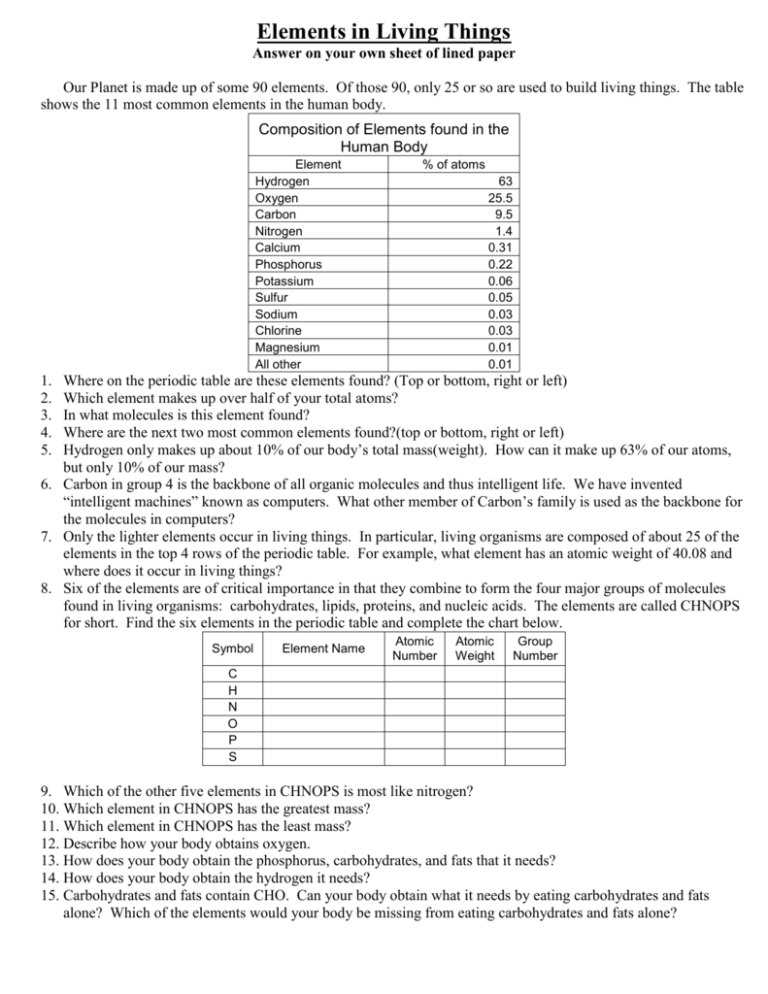
Elements in Living Things Answer on your own sheet of lined paper Our Planet is made up of some 90 elements. Of those 90, only 25 or so are used to build living things. The table shows the 11 most common elements in the human body. Composition of Elements found in the Human Body Element Hydrogen Oxygen Carbon Nitrogen Calcium Phosphorus Potassium Sulfur Sodium Chlorine Magnesium All other % of atoms 63 25.5 9.5 1.4 0.31 0.22 0.06 0.05 0.03 0.03 0.01 0.01 1. 2. 3. 4. 5. Where on the periodic table are these elements found? (Top or bottom, right or left) Which element makes up over half of your total atoms? In what molecules is this element found? Where are the next two most common elements found?(top or bottom, right or left) Hydrogen only makes up about 10% of our body’s total mass(weight). How can it make up 63% of our atoms, but only 10% of our mass? 6. Carbon in group 4 is the backbone of all organic molecules and thus intelligent life. We have invented “intelligent machines” known as computers. What other member of Carbon’s family is used as the backbone for the molecules in computers? 7. Only the lighter elements occur in living things. In particular, living organisms are composed of about 25 of the elements in the top 4 rows of the periodic table. For example, what element has an atomic weight of 40.08 and where does it occur in living things? 8. Six of the elements are of critical importance in that they combine to form the four major groups of molecules found in living organisms: carbohydrates, lipids, proteins, and nucleic acids. The elements are called CHNOPS for short. Find the six elements in the periodic table and complete the chart below. Symbol Element Name Atomic Number Atomic Weight Group Number C H N O P S 9. Which of the other five elements in CHNOPS is most like nitrogen? 10. Which element in CHNOPS has the greatest mass? 11. Which element in CHNOPS has the least mass? 12. Describe how your body obtains oxygen. 13. How does your body obtain the phosphorus, carbohydrates, and fats that it needs? 14. How does your body obtain the hydrogen it needs? 15. Carbohydrates and fats contain CHO. Can your body obtain what it needs by eating carbohydrates and fats alone? Which of the elements would your body be missing from eating carbohydrates and fats alone?
